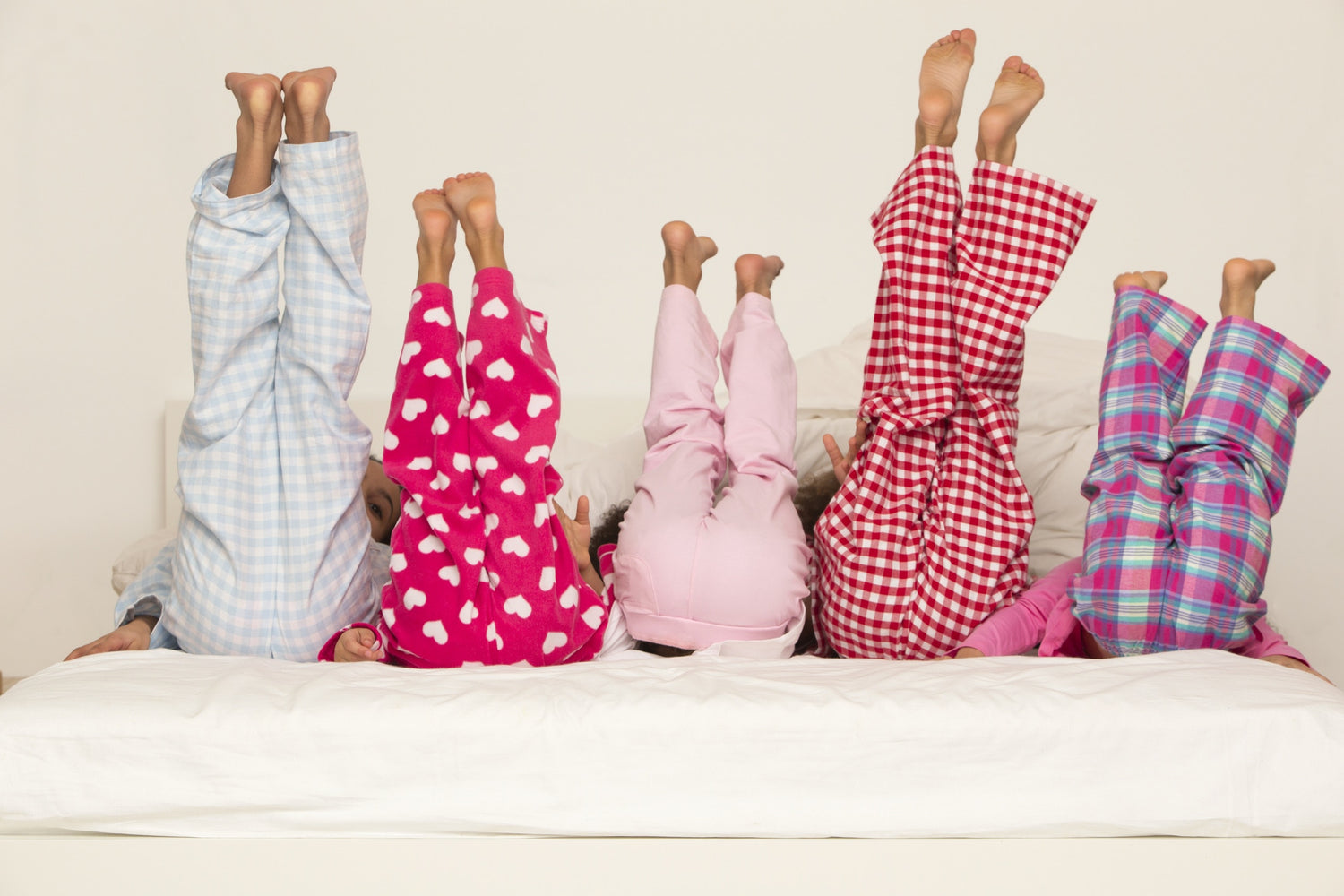It took me nine months to cave on my "no holiday clothes" policy for baby. I hated the idea of celebrating Valentine's Day, St. Patrick's Day, Easter, Mother's Day, Father's Day, and the Fourth of July with a onesie or footie pajamas intended for a single use.
But then came Halloween. There were mummy sweats, socks with skeletons and bats, pumpkin-covered everything, and adorable ghost pajamas. I caved. When the Gap package arrived one week later, I rationalized keeping each festive item, even though I really only needed one.
But then, hanging off the left arm of the spooky ghost T-shirt, there was a bright yellow tag: "For child's safety, garment should fit snugly. This garment is not flame resistant. Loose-fitting garment is more likely to catch fire."
I had spent a good portion of the previous nine months worried about so many terrible ways my son could be killed or injured, but I'd never once thought "pajama fire." So I did what I always did in that first confidence-sacking, terrifying year with a new baby. I called my mom.
My mother is a fire safety guru. My childhood was punctuated by multiple memorable fire drills. One day a construction paper fire appeared on the back of the couch, because, as mom said, sometimes fire is quiet. I've carried fire safety lessons into my adult homes, checking the smoke detectors every time we spring forward or fall back. When a pan of brussels sprouts in bacon fat kept tripping the alarm last week, I had my son practice getting to the door.
Even in my fire-conscious home, flame-retardant pajamas had never once come up. So I assumed my mom would reassure me that ill-fitting or flammable jammies were yet another of the ridiculous precautions taken by modern parents.
But after I hung up, I returned the pajamas. It turned out my mom did know about pajama fires, including images of ignited sleepwear burned into her memory.
I resolved to buy flame-resistant pajamas from then on. But a year or so later, on a trip to JoAnn's for blanket material, I noticed a sign in the Snuggle Flannel aisle: "Warning: Not Intended for Children's Sleepwear." The aisle was floor-to-ceiling bolts of bears, blocks, flowers, gingerbread men, plaids...exactly the sort of fabric you'd use to make cute pajama pants.
So I decided to learn why exactly children's pajamas are so dangerous. That label on the Gap pajamas? It comes from the Consumer Product Safety Commission, and how it got there is an interesting story.
The story starts with another common Halloween dress-up item: cowboy chaps. Specifically, a Gene Autry costume that, as Barbara Young Welke writes in an inventive play published in the UC Irvine Law Review, was the cause of one hundred lawsuits between 1945 and 1953.
The cowboy suit and other similar incidents were the impetus for the 1953 passage of the Flammable Fabrics Act, which regulated, among other things, which fabrics could be used for clothing. No more rayon pile chaps for kids (or brushed rayon sweaters for women), as such items had become famous for creating what were widely reported at the time as "human torches."
Almost 20 years later, Congress passed the 1972 Consumer Product Safety Act, which established the Consumer Product Safety Commission (CPSC). In 1975, the CPSC added additional requirements for children's sleepwear. In the years that followed, both pediatric burn rates and burn severity declined. Abraham Bergman's 1977 editorial in Pediatrics captures how enthusiastic pediatricians and burn care specialists were about the CPSC sleepwear regulations:
"I know it sounds ghoulish, but the staff of the burn unit in my hospital practically danced around the beds of the three children who were admitted in the past year with burns incurred when their pajamas ignited. The reason was that they were wearing garments that had been treated with a flame-retardant chemical. The burns, therefore, were trivial. The children were quickly treated and sent home. A few short years ago, before flame-resistant sleepwear was on the market, these same children would either have been dead or sentenced to a life of pain and disfigurement."
Bergman's enthusiasm for treated fabrics is reflected in medical literature of the late 1970s, which reported lower rates of burns overall, as well as decreased severity. The Shriners Burn Institute, for example, reported a decrease in overall burn rates. In one year, only one patient had to be hospitalized after sleepwear ignition. All other patients were discharged from the emergency room.
The results of the Shriners study seem like cause for celebration. Pediatric burn rates at their hospital went down, as did the percentage of burns caused by clothing ignition. The authors of the Shriners study, however, cautioned against too simple a conclusion, noting that changing fashions (a shift from nightgowns to two-piece sets, for example), might be decreasing flammability risk.
The rise of in-hospital burn centers at many large hospitals might be in part responsible for the lower admission rates. Additionally, the publicity given to Massachusetts' adoption of federal requirements for children's sleepwear might have meant that parents were more alert to potential dangers and dressed their children accordingly.
Another explanation for decreased burn rates could stem from a social behavior on the decline in the late 1970s. Public health campaigns linking smoking and cancer resulted in a lower rate of smoking among many populations. It's possible, then, that the pediatric burn rate was in part affected by lack of smoking.
There were fewer lighters and matches for children to discover in the wee hours of the morning, which is why the flame-resistant emphasis was placed on sleepwear in the first place. The CPSC states in its 2000 introduction to the yellow tags, children are most likely to be burned by playing with fire "just before bedtime and just after rising in the morning."
The cancer fears that led to a decline in smoking rates also led to a change to the CPSC's children's sleepwear policy. In the late 70s, doctors were also concerned about new possible cancers resulting from the flame retardants used to treat children's sleepwear, which brings us to the current requirements that sleepwear be "either flame-resistant or snug-fitting." Tight pajamas may not be as safe as flame-resistant ones, but loose clothing is more likely to catch fire than tight clothing.
The CPSC regulations are intended to "protect children from serious burn injuries if they come in contact with a small flame," like a candle, match, or lighter. Now that many homes favor electric ranges to gas ones, LED candles, and even projector fireplaces, children might be at lower risk than ever of small flame burn injuries.
So should I have kept those cute ghost pajamas, even though the fabric wasn't flame-resistant? Right now, our small cache of matches is in a cupboard that even I can't reach without a stepstool (Mom's fire safety lessons have stuck with me). So the risk of my toddler coming into contact with a small flame is minimal.
I should have kept the pajamas. And now that the weather is turning, I think I'll even risk some flannel pajama pants.



